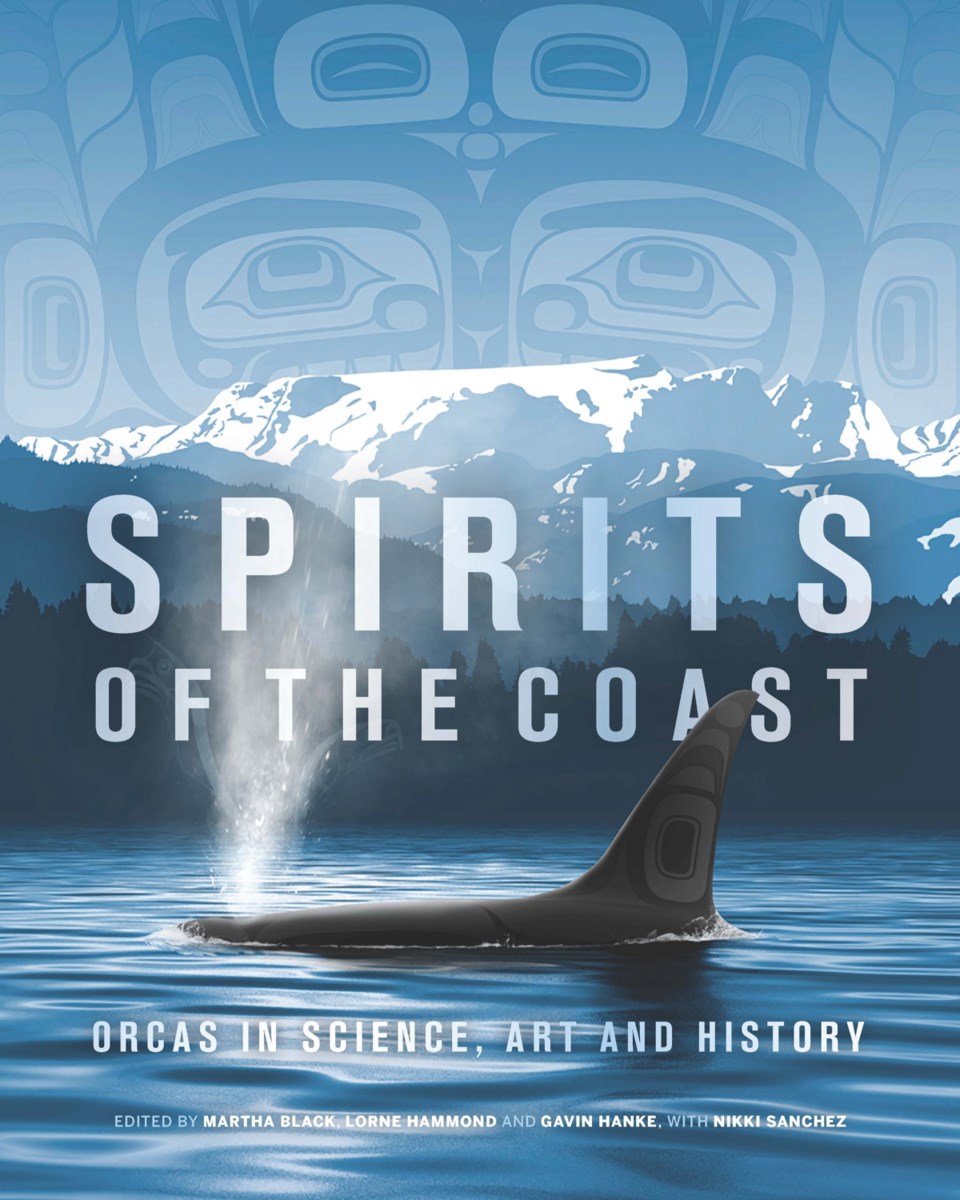The Royal B.C. Museum’s upcoming Orcas: Our Shared Future exhibit will not open today as scheduled. But the postponement — to 2021 due to the museum being closed over COVID-19 concerns — comes with something of a silver lining.
Spirits of the Coast: Orcas in Science, Art and History, a 216-page book featuring photographs, illustrations and original writing by some of the foremost orca experts in the area, from marine biologists and conservationists to Indigenous leaders, is now available to the public. Originally conceived as a literary companion to Orcas: Our Shared Future, the book is currently the lone piece of the exhibit that can be made public.
“We wanted to do a companion literary piece that would stand on its own,” said Lorne Hammond, curator of history for the museum. “We’re dealing with themes quite deeply, I think.”
The book is the culmination of a year-long journey by Hammond and fellow museum curators Martha Black and Gavin Hanke, who joined environmental educator Nikki Sanchez as editors on the project.
Black worked with Indigenous elders to give the book a historical context, while Hanke tackled the scientific component of marine life. Hammond looked at orcas from a cultural viewpoint and Sanchez solicited work from young Indigenous artists, writers and poets. Contributors include Bill Bissett, David Suzuki, Michael Nicoll Yahgulanaas, Paul Spong, Gary Geddes and Briony Penn, among others.
“It was multi-generational in that sense,” Hammond said. “We didn’t want it to become a field guide to orcas, or a scholarly, science research book, per se.”
It took more than two years and a budget of $1.6 million to bring Orcas: Our Shared Future together. The exhibit was postponed March 17 when executives closed the museum indefinitely, a decision Hammond supported. “We are really committed to the exhibit, in terms of heart and soul — not just budget. We want it to have a big splash. The last thing we want is a fabulous exhibit that nobody saw.”
When COVID-19 made museum visits an impossibility, some of the advance planning turned out to be for naught. But while visits with museum partners from around the world were shelved, the expectation is that Orcas: Our Shared Future will tour North America and Europe for several years to come — which would make it one of the museum’s largest travelling exhibits to date.
“We’re not just building a one-year exhibit,” Hammond said. “We’re building an exhibit with the intention, right from the start, that it is going to make a splash and keep going for five years, possibly 10 years. But we can’t show it to buyers who have their own [COVID-19] problems right now. All those museums are in the same state we are.”
There’s a strong sense of ownership to both the book and exhibit, Hammond said. The first field research on orcas took place in B.C., while a number of famous orcas, including Namu, Tillikum, and Luna, have direct ties to our region.
The first aquarium with an orca was in Vancouver, out of which the Save the Whales campaign originated. “It’s trickling out from here. If you’re working with orcas anywhere in the world, you probably read your literature from the University of British Columbia, or ordered your hydrophones from a guy in B.C.”
Spirits of the Coast: Orcas in Science, Art and History is available for purchase from rbcm.ca/spirits. Orders placed before May 18 using the coupon code SPIRITS30 will receive 30 per cent off the listed price in addition to reduced shipping.



